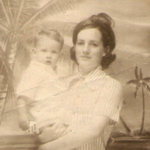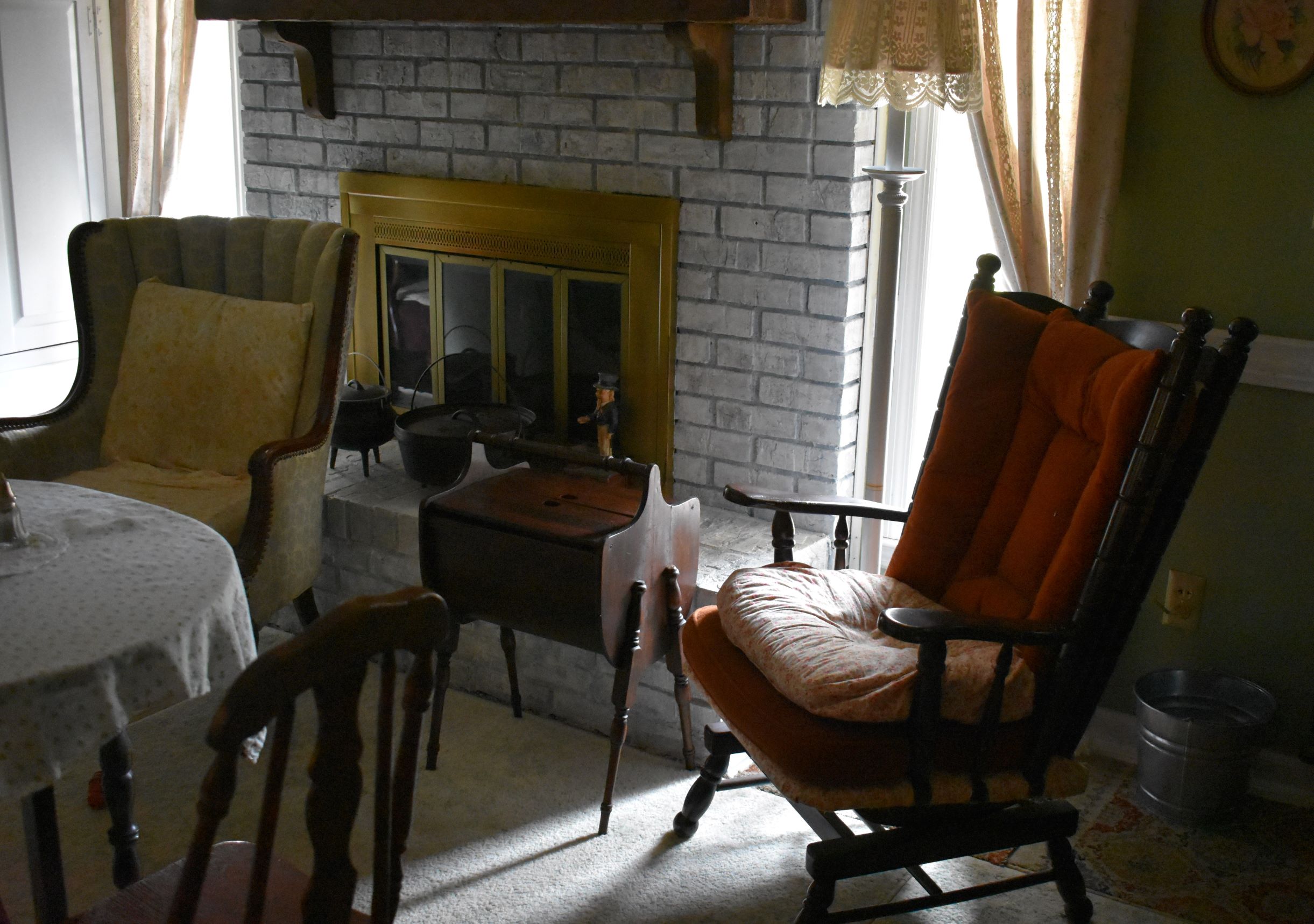
For anyone just finding my blog, my husband Charles, and I live a old fashioned simple life and we enjoy studying history. We do one year studies and live like the year we are studying. We try to live the way they did as much as we can so we can learn what it was like. There are diaries that go along with the study and are in separate posts.
Charles and I are considered Seniors now, Our Grandchildren are now adults. Our new study in 2023, we will be living like the early 1930s and going through the great depression.
We have been moving furniture in our home (again) so that we have sitting areas positioned in a way to do some of the same activities that were done in the home during the 1930's.
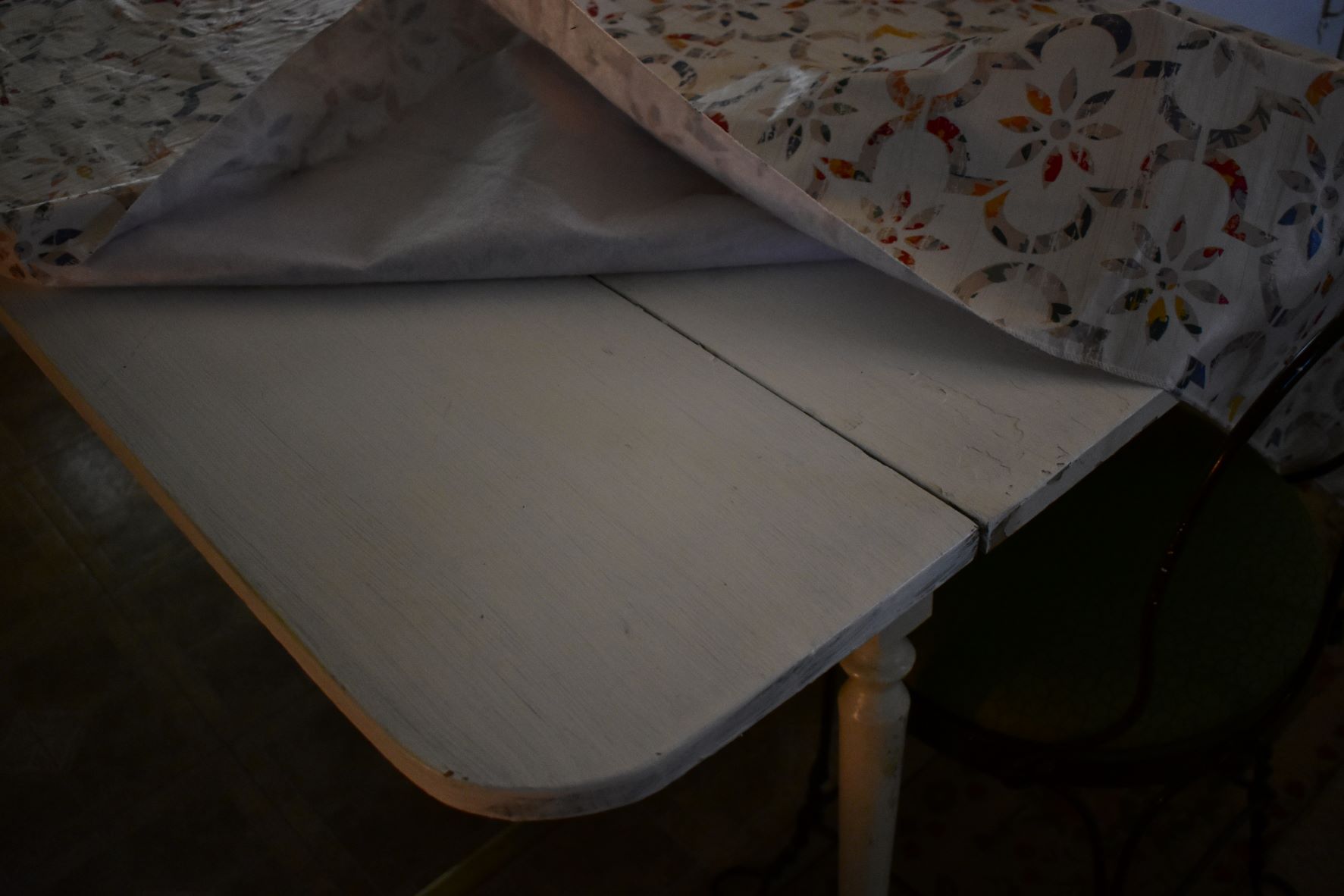
We moved the old wood drop leaf table to the end of the counter bar in the kitchen and we will use it for eating breakfast but I will keep it cleared each day so that it can be used for other purposes such as folding laundry or pealing and cutting vegetables.

Our turnips are finally making roots, I will adjust my fall planting dates next year.

We grow turnips for the root and we eat the greens as well. We do not have enough space to grow the turnips for the greens but we do get enough to add them to soup.
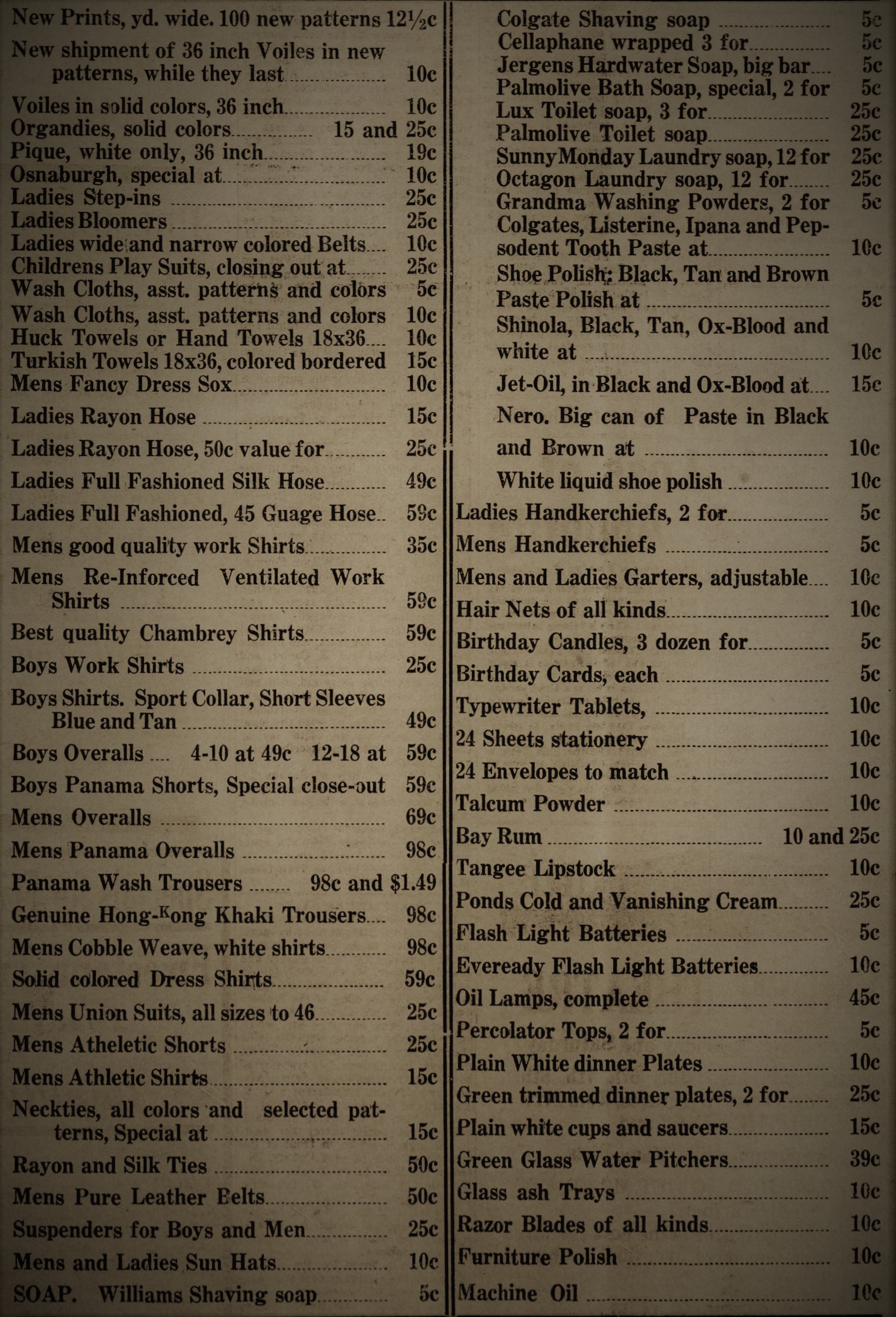
We are deep in research and trying to cover the years of 1929 to 1935 for this study. This above is a list of goods in a store in 1932.
I have been typing up a list of what groceries cost during this time and thought I would share what I have so far for those that are also preparing for the study.
Grits .10 cents 3 lb,
Dog food, 3 cans for .25 cents,
They did put things on sale at the grocery store so these prices did change as they do today.
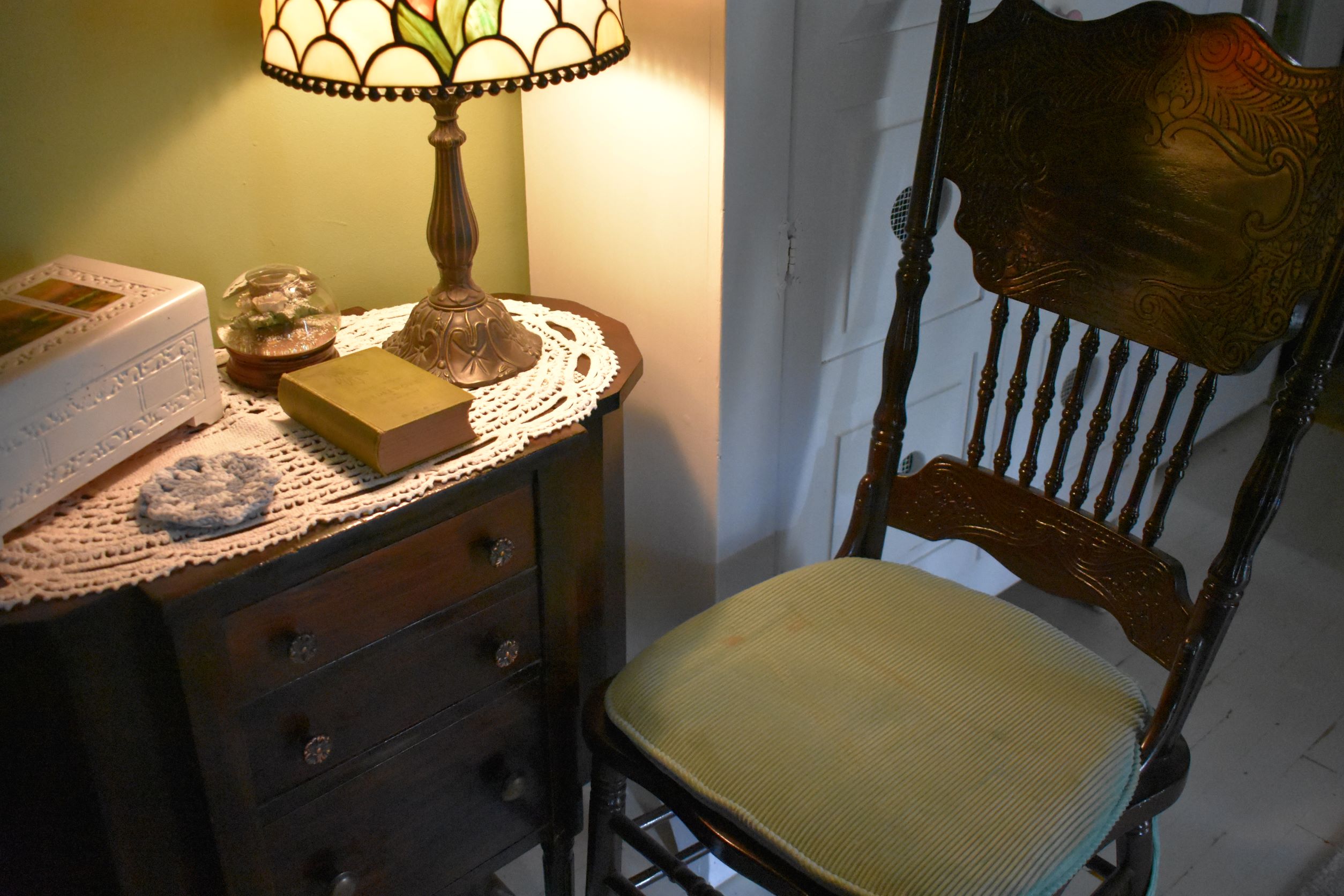
We are now trying to decide for our study what we would have afforded in our home. Those that did have electricity, what would they have electrical to plug in?
I have just learned quite a bit about electricity this past week, during the years 1929 through 1935. There was much advertising during this time trying to convince people to have electricity pulled to their homes.
There are so many scenarios with electricity in the homes. One fact is that it depends on where one lives. In the larger cities such as New York City verses a small town in Alabama, in a rural area or anywhere in the world. It took a long time to get power lines to smaller towns and then rural areas came much later.
Here in the southern united states where we live during the 1930s, some people did have electricity and some did not. As I have found in research this week some connected to electricity only to find they could not use it because they could not afford the price of kilowatts used. In the very early 30's only about 10 percent of rural areas had electricity. What I can find says that by beginning of 1930s seventy percent of households were electrified.
Here is what I found by studying our town in the early thirties great depression years. The electric company was advertising heavily to get people connected to electricity and also they sold electric stoves. They needed to pay their bills and make some profit so of course they were going to try and get everyone connected to their service.
Something to mention here. People managed very well in the past living with oil and gas lamps and cooking on wood, coal and oil stoves. It was how they knew to live and live comfortably.
In the year 1933, there was a disagreement going on at the city over whether they should build a gas plant. During this time many felt gas was less expensive than electricity. The city needed to sell electricity to the residents. Some said they could make profit off of gas. Some said don't put more money in the electric plant some said put it in gas, some said no do not build a gas plant. The argument was gas cost less and people could not afford to use the electric. Also about investing a large sum of money to build a gas plant.
There was a new liquid gas company getting established in town during 1932 called Southern Liquid Gas Company, these meetings about the city building a new gas plant were taking place in 1933.
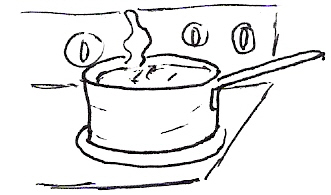
In one of the meetings at the city where more were in favor of gas, one man spoke and said, " There was no doubt that many citizens who today are cooking on oil and wood stoves would install gas stoves. They realize that the cost of electric current for cooking purposes is prohibitive to them. Also, in recent days, many citizens who have been cooking on electric stoves have bought oil or wood stoves, and are now doing their major cooking and heating on them.
In other words, there was much advertising by the power company to get people to connect to electricity and also the city was selling electric stoves and many of those that did purchase the electric stove were going back to cooking on wood or oil because they could not afford to cook on their electric stove. I studied further and found that during this time there were three things that people would use the electricity for and that was Light bulbs, a radio if they had one and a fan.
Yes, there were many things electric during this time but considering wages, unemployment, the cost of each KWH (Kilowatt hour), it was not affordable to many, not all but many.
Then there was the non electric refrigerator (that required ice) and the electric or Motorized Refrigerator. The cost of the purchase of the electric refrigerator was a problem for many and then the KWH used that ended up on the electric bill which was new to many was not affordable.
So there was a mix of old and new during this time. Some still drove wagons and buggies and some drove cars. I have a photo from 1930 and in our small city of a man driving a wagon with oxen's pulling the wagon going down a residential dirt road as he passes a car parked at a nearby house.
Some houses do not have electricity, some do and use the electricity and some have the electricity but cannot afford to use it.
Average water is $1.00 minimum, up to 25,000 gallons .35 cents per 1,000 the price changes per each 1,000 gallons up to certain amounts of gallons. The average use was approx 1,000 gallons per month.
Firewood is approximately $3.00 per cord for oak or pine, stove wood is $3.00 per cord Firewood is 1.50 per strand and Stove wood is 1.25 per strand. I cannot answer what a strand of firewood is other than a half a cord?
Postal prices. Letters or 1st class mail .3 cents per ounce Postal card .1 Cent, Airmail 8 cents for 1st ounce .13 cents additional ounce.
Back to electricity
One Kilowatt Per hour will light your 60 watt lamp for 2 nights or 16 hours. 40 watts 25 hours. An Electric fridge 12 hours which is half a day and since people do not cut their refrigerator off for half a day I do not know why they did not say that it is Two Kilowatts per day.
Here is a list of the prices of Kilowatts per year ending December 31.
The year 1926, 7.75 cents per Kilowatt, The year 1927, 7.56 cents per Kilowatt, The year 1928, 7.28 cents per kilowatt, Year 1929, 5.56 cents, Year 1930, 5.05 per kilowatt and the year 1931 4.87 cents per kilowatt.
So we will use the 4.87 per kilowatt and right away we can see there is no way for us to afford to use an electric stove or refrigerator during the great depression.
A newspaper costs .15 cents per week or .65 cents per month.
Something I found interesting, advertising non electric refrigerators, wood stoves and Wood Ranges were slowing down advertising other than their sale prices but in 1933 they were once again showing up more often. A wood Stove in 1933 was $12.50 and a Wood Range was $45.50 and if that were today there would be one in my kitchen!
In 1933 the power company was starting to advertise often and with figures showing the more electricity you use, the more money you save. Everyone was getting desperate to get customers.
The city in which we live was having many problems, they were having meetings about cutting salaries to city employees, there was a water issue on a certain street that needed a part that cost $18.00 and they did not know if the city had the money for this part to fix the water issue.
The city owed back wages, and it was not just the city it was most everywhere. Teachers were not getting paid and they were making decisions to close the schools.
The gas rate for liquid gas was 10 lbs per month $1.20. 20 lbs gas $2.40. 25 lbs $3.00, 30 lbs gas $3.60, 35 lbs $4.00, 40 lbs $4.40, 45 lbs $4.80, 50 lbs $5.20, 55 lbs $5.60 60 lbs $6.00.
Milk Prices
Milk was delivered to the homes during this time and they delivered twice a day.
Sweet milk prices. 1 Pint 6 1/2 cents 1 Quart 12 1/2 cent 1 Gallon .40 cents.
Sweet Cream 1/2 pint .15 cents 1 Pint .30 cents 1 Quart .50 cents.
Butter Milk 1 Quart .08 cents 2 quarts .15 cents 1 gallon .25 cents
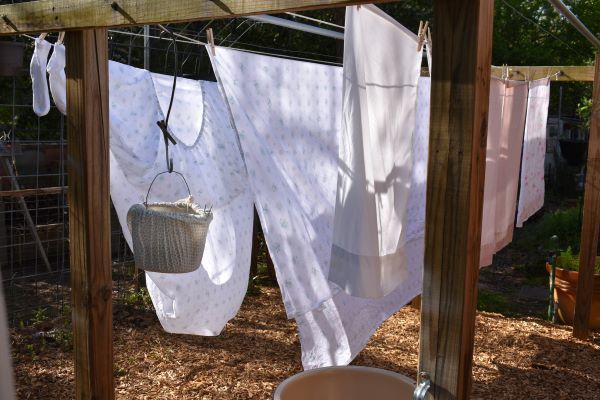
Laundry...
Some people did not have a washing machine, some did and some did not. During this time it was common for people to have their laundry washed by a local laundry. This was a route service where a route worker would come and pick up your laundry and then returned it. In other studies that I have done, even further back in time, this was common to send laundry out to be washed. Someone would come with horse and wagon to pick up and bring back the laundry.
If they had servants or maids then their laundry may have been washed at home. Laundry service during the early 1930s was approximately .10 cents per pound of dirty laundry.
The average to lesser wage household would have most likely washed their own laundry the old way. Again it all depended where one lived. There were gas operated washing machines during this time.
This History study there are a lot of factors. If you were living during the 1930s what would your situation be? The new diaries are very interesting because life does not seem as difficult as what is shown to us as how the great depression was. One we do see, is that people in the rural areas that had farms seemed to do pretty good unless they were the farms that had to be abandoned due to the dust bowl times.
Some people just lived their life as usual because they did not lose their job but they still must have felt the affects at some point.
We will see as we go through this next year. Charles and I still have much to work out to see how similar we can get our home to living during this time in history. I am sure it will be a bit difficult but we all need a dose of learning how to do without some things.
We are just getting to the point to try and figure out his pay scale and the cost of living for us. It seems pretty intimidating right now, I cannot imagine what it was like for our generations before us. We had figured that Charles would take a bakery position after finding a wage scale from a bakery but I have lost this information through my research. So now we have researched further and have found an average income for the year 1931 of $1,368.00 per year. There are different estimations depending on where one looks. This would be $114.00 per month or weekly pay $28.50.
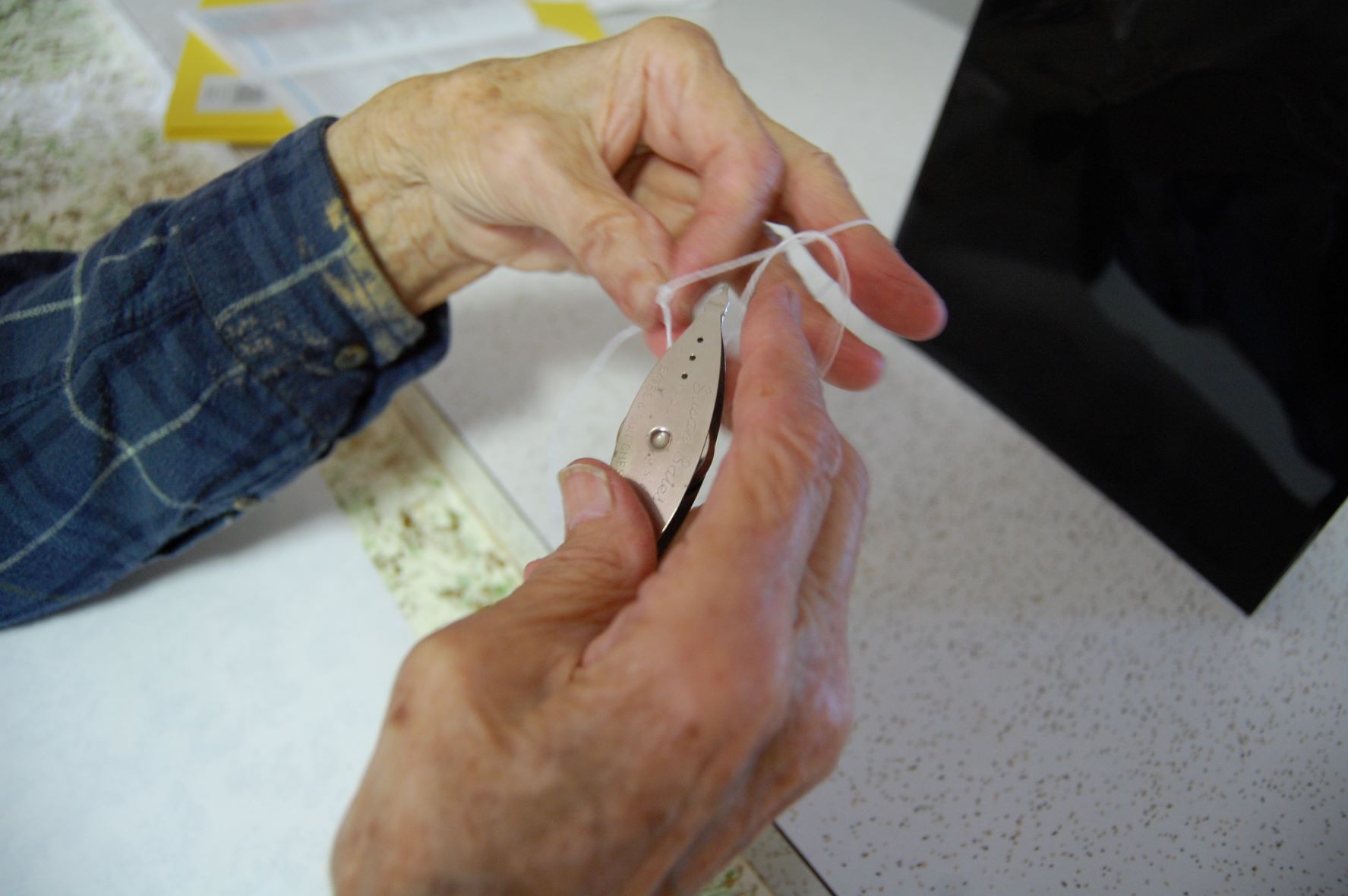
A photo of my neighbor in her late 80's and I visiting one another many years ago and were shuttle tatting. Naomi had forgotten how and was trying to refresh her memory. We were sitting in my kitchen, each with tatting shuttles and thread.
During this confusing and stressful time of the great depression, when we talk or think about people "not" having electricity and running water, we should not associate that with someone being poor.
It is important for us to remember that people do not need electricity and running water to raise a family or live. Is it helpful, if it can be if afforded. We do need water but not necessarily running water. Lighting is helpful but there are other sources and living by the sun is also good. Rise at sunrise and sleep at sunset. There are small things we can use if we need lighting in between such as a candle or oil lamp. I think about the candle scene in British series Cranford where the new doctor came to town and the carpenter broke his arm and they needed lighting so they had to gather all their candles so the doctor could see to do the surgery.
Electricity and running water are a convenience. When the people at the city were doing all they could to get people to connect to their services people had other options, keep using what they were using. which during this time were wood stoves and gas stoves or fireplaces and then there was coal. There were gas washing machines and there were also washtubs. There were buckets and there were wash stones.
All the things we pay for today are conveniences. The word tote comes to mind, we can walk to the store and tote the groceries back home. We can tote water or a bucket of apples. This does not mean we are indigent, it might mean it is the reason we have a large savings.
I just want you to understand how much control we all have with choosing how much we use. If we have a high utility bill first find out what we need to do to bring that down and what are our other options.
After I wrote this above I stopped and did a search to see if I could find a clip of the scene I described in Cranford and I found this website that said some of what I just said but so much more and was excited I found this to share with you because this is exactly what I am talking about how people just lived without these modern things we have today. The old way makes sense to me.
I must study this website more thoroughly because I just discovered it and has free audio readings of Jane Austin books and so much more. :)
Here is a link to this website. https://janeaustensworld.com/2008/05/11/light-in-cranford-and-sense-and-sensibility/
Will have more information next post.
Your comment it goes to my admin so I can read it before it goes below the post. If it comes in during the night while I am sleeping I will release it the next morning and if I am away from my computer during the day I will find it and release it after I have read it. I enjoy reading your comments.
Grandma Donna
